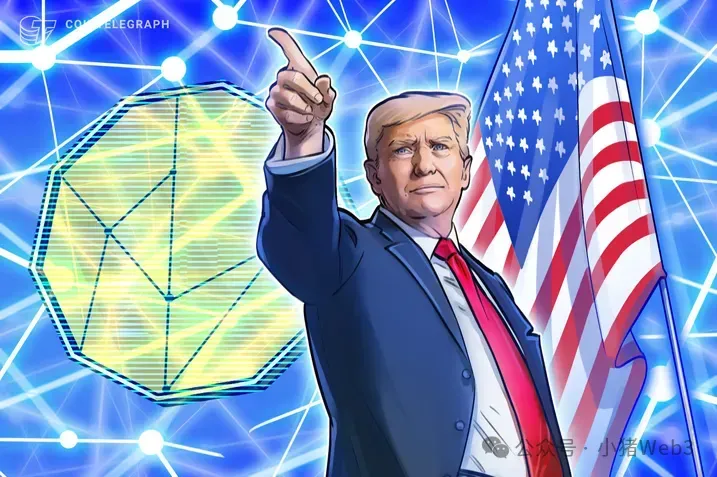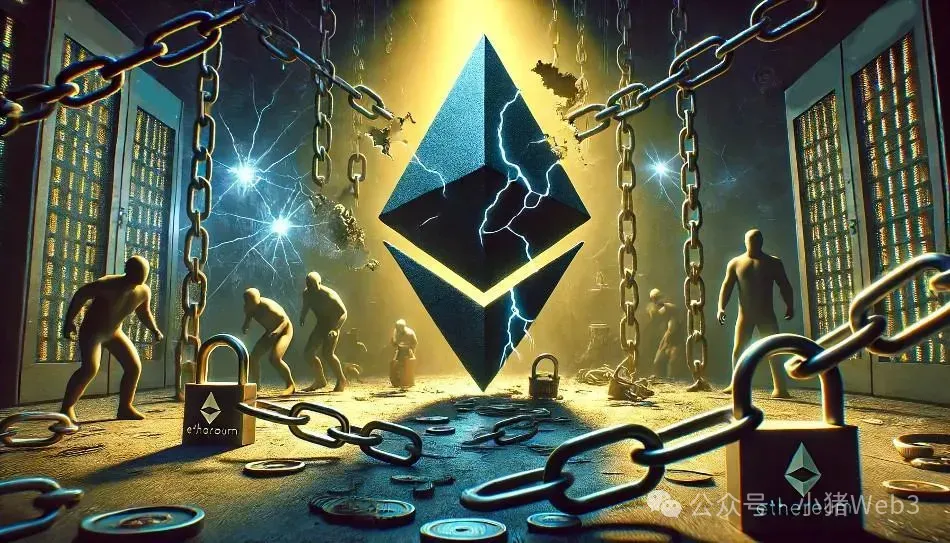Preface

On the morning of January 8, Trump posted on Twitter and his social media Truth Social, releasing a meme coin named TRUMP on Solana. In just four hours, TRUMP's market value quickly reached 16 billion US dollars, becoming the second largest meme coin after Dogecoin. On January 9, TRUMP's price continued to soar, with a market value of 80 billion US dollars. It not only surpassed Dogecoin to become the largest meme coin, but also was less than 50 billion away from the market value of SOL at the time. In two days, it took Dogecoin 11 years to achieve this goal.
Solana's native token SOL also continued to rise due to this positive trend. In fact, on January 16, the New York Post reported that Trump was "open" to the idea of using digital currencies issued in the United States (such as SOL, USDC and XRP) as strategic reserves. SOL and XRP (Ripple) are expected to launch spot ETFs this year. The price has risen by more than 40% in the past week, and the voice of flipping Ethereum is gradually rising in the community.
However, ETH (Ethereum), which shined in the "Trump market" in December last year, and its ecological DeFi tokens (LINK, AAVE, ENA, etc.) have performed poorly, especially Ethereum. As the cryptocurrency with a market value second only to Bitcoin and the only two with spot ETFs, not only has its growth rate far less than BTC, SOL and XRP, but its foundation has also been criticized by the founders of many well-known projects recently and is in deep trouble.
The impact of Trump’s currency issuance

First of all, TRUMP is not a meme coin issued "on a whim" on Pump.fun, the largest meme coin issuance platform on Solana, but a long-planned collaborative action that secretly cooperates with Solana and multiple protocols and related projects on its chain. It can be said to be a VC coin in the guise of a meme coin. The partners include Jupiter, the largest DEX aggregator on Solana, the liquidity protocol Meteora, and the meme coin trading platform Moonshot. The market maker behind it is Wintermute. It is worth mentioning that Wintermute is also the main market maker of many high-market-cap meme coins, and previously made the market for the well-known meme coin PEPE.
Secondly, in the short term, the issuance of TRUMP has caused a huge "blood-sucking effect", draining the market's liquidity and causing the price of cryptocurrencies other than the Solana ecosystem to collapse. TRUMP's deployment on the Solana chain will further strengthen the market recognition of the Solana ecosystem, and the Meme coins and AI coins on the Solana ecosystem have also gained more liquidity, increasing the revenue of DeFi protocols on Solana. The crypto market has also ushered in a wave of new users. Moonshot said they have attracted more than 400,000 new users in 24 hours. In addition, on-chain tools such as GMGN have also become beneficiaries, with revenues exceeding the largest DeFi protocol Uniswap in the short term.
Finally, in the long run, Trump is fulfilling his crypto policy promises. Combined with Trump's statement at the World Economic Forum in Davos, he plans to make the United States the "world capital" of AI and cryptocurrency. Trump's own issuance of coins actually shows a relaxed stance on the regulation of the crypto industry. The Trump family's World Liberty Financial is not only involved in the DeFi field, but also actively deploys RWA (real world assets), which may promote more traditional financial institutions to get involved in the DeFi field. In addition, local cryptocurrencies in the United States will also usher in policy benefits, such as Solana, Ripple and Sui, and the former two have ushered in the dawn of the ETF approval process.
Here we will further introduce Solana and Ripple, as well as their differences from Ethereum.
Ethereum was born in November 2013, when Russian-Canadian programmer Vitalik Buterin published a white paper titled "Ethereum: The Next Generation of Smart Contracts and Decentralized Application Platform". Compared to Bitcoin's single cash system function, Ethereum is a decentralized global computer platform that can run smart contracts of any complexity. ETH (Ethereum's native cryptocurrency) is the second largest cryptocurrency in terms of market value after Bitcoin, and is currently the only cryptocurrency with a spot ETF. Ethereum is the beginning of Web3, ushering in the era of smart contracts on blockchain and catalyzing the outbreak of DeFi projects on Ethereum in the summer of 2020. For example, Uniswap, as the largest DEX on Ethereum, had a transaction volume of over $450 billion in 2023, exceeding the spot transaction volume of Coinbase, the largest exchange in the United States.
Ripple was born in September 2012, earlier than Ethereum. Its predecessor was the RipplePay project, which was taken over by Jed McCaleb, Chris Larsen and Arthur Britto and then created Ripple (XRP). Ripple was founded to revolutionize the global remittance industry to replace old systems like SWIFT. Ripple is not strictly a public blockchain, but a permissioned blockchain, because it uses the PoA (Proof of authority) consensus mechanism, and transactions and blocks need to be verified by approved validators (called UNL lists), so it is more centralized than traditional blockchains (such as Bitcoin and Ethereum), but it also demonstrates better scalability. In addition, Ripple donated $5 million worth of XRP to support Trump's presidential inauguration.
Solana was born in November 2017, when former Qualcomm engineer Anatoly Yakovenko published a white paper introducing "Proof of History" (PoH) - a mechanism for keeping time between untrusted computers. With PoH, Anatoly set out to build the Solana blockchain, which aims to match the performance of a single machine and overcome the scalability constraints of traditional blockchains (such as Ethereum), so that data can be more efficiently propagated between nodes, thereby achieving a high-performance Layer1 whose software scales at the speed of hardware. Solana has many technical advantages that are precisely targeted at Ethereum's shortcomings, such as super-fast speed, with a real maximum daily average number of transactions executed per second reaching 1,000, while Ethereum can only reach 20; secondly, super-low fees. Compared with Ethereum, Solana's transaction fees are only one percent of Ethereum's.
Ethereum’s internal and external troubles
If Ethereum’s predicament is expressed in four words, it is “internal and external troubles.”

Internal troubles
The Ethereum Foundation has recently become the target of public criticism, mainly due to its inaction, continuous sales of ETH on the chain, lack of contact with the community, and strategic issues with Layer2. Kain Warwick, the founder of Synthetix and Infinex, believes that Layer2 should be pressured to buy back ETH, while Michael Egorov, the founder of Curve, is more radical and believes that Layer2 should be abandoned to develop Layer1. Stani Kulechov, the founder of AAVE, believes that the Ethereum Foundation needs to be thoroughly reformed in 12 aspects.
On January 18, Vitalik said that after the Ethereum Foundation was criticized for its lack of participation in the Ethereum ecosystem, the foundation's leadership structure, communication with the network developer community, and support for them will undergo "significant changes." Regarding the sale of ETH on the chain, on January 21, the Ethereum Foundation announced the establishment of a wallet address to start participating in DeFI. The organization plans to inject about $150 million worth of ETH into the wallet, but noted that it may take a few days to complete the setup.
On January 22, Lido co-founder Konstantin Lomashuk retweeted a post hinting at the establishment of a "Second Foundation". He said: "Ethereum is the ultimate world computer, and every Ethereum enthusiast can help it grow, evolve, and succeed. If the second foundation is really established, it must have a clear goal to complement the tremendous work of current contributors. I thank everyone for their support and think we need more organizations to contribute to Ethereum."
On January 24, Vitalik published an article discussing Ethereum's expansion strategy for 2025 and beyond, emphasizing Ethereum's unique advantages in terms of decentralization and practical application value, and said that the success of Layer2 confirms the development concept of the Ethereum ecosystem, emphasizing that the Layer2 strategy will continue to be adhered to. Vitalik pointed out that there are currently two major challenges: expansion scale and heterogeneity issues. Specific plans include: increasing data block capacity, strengthening interoperability and ZK-EVM, security construction, and optimizing economic models.
foreign aggression
The two cryptocurrencies with similar market capitalizations are Ripple and Solana. But in fact, Ripple is not a rival, as mentioned in the previous chapter. Ripple is a permissioned blockchain. Since Ripple's main customers are international banks and investment companies, the key goal is regulatory compliance rather than decentralization, and it is understandable that it uses a permissioned blockchain. Therefore, Ethereum's main competitor is Solana, which is also a public blockchain. If we put aside the "Trump factor", we can compare the two blockchains from three aspects: decentralization, scalability, and ecology.
It is generally believed that Ethereum is more decentralized than Solana. The reason why it is generally believed here is that decentralization itself is an abstract concept and difficult to measure. General indicators include the number and distribution of nodes, distribution of token holders, client diversity, Nakamoto coefficient and governance process. To avoid controversy, the author only represents his personal opinion. If Ethereum's decentralization is scored 100 points, Solana is about 70 to 80 points, while other PoS blockchains are all below 60 points.
But if we score from the perspective of scalability, Solana can score 90 points, while Ethereum is below 10 points. However, Ethereum's solution to the scalability problem is to adopt Layer2, which allows more transactions to be processed while maintaining security and decentralization by building an additional network layer on the Ethereum chain. Currently, Base is the largest Layer2 on Ethereum, developed by cryptocurrency trading platform Coinbase and Optimism. The highest TPS can reach 300, but it is also significantly lower than Solana.
Ecosystem is Ethereum’s biggest advantage. Ethereum’s mainnet was launched six years earlier than Solana, and it has accumulated a large number of developers and users. There are a lot of infrastructure and long-term applications built around Ethereum, but starting in 2024, the number of new developers on Solana has exceeded that of Ethereum. For users, most of them trade in the Dex on the chain. Due to the wealth effect of Meme coins and AI coins on Solana, the number of active users has surpassed Ethereum in recent months.
Summarize

I personally am not that pessimistic about the future development of Ethereum. I joined the Web3 industry in 2020 and was attracted by Ethereum’s innovations. I am also a contributor to LXDAO and ETHPanda, and I have met Vitalik on many occasions and listened to his sharing.
From an emotional perspective, I think Vitalik is an outstanding leader with a "computer culture" temperament. Although he does not have exaggerated marketing rhetoric, he is able to listen to information, respond to questions, and make decisions. So I also believe that the Ethereum Foundation can successfully reform under Vitalik's leadership.
From a technical perspective, the author believes that Ethereum has developed a long-term and detailed technical route to implement the concept of decentralization. In the future, Ethereum will be able to achieve more than 100,000 TPS through Layer2, transaction confirmation in seconds and low handling fees. Of course, the premise is that it can be delivered in time according to the roadmap.
As for Solana, its competitor, Solana is currently positioned as a consumer-grade public blockchain, which has gradually captured the minds of users in the ToC field. After all, users are not so concerned about decentralization, but about low transaction fees and high transaction speeds. It may take three to five years for Ethereum to match Solana in terms of high performance, so the opportunity in this cycle is not great.
However, Ethereum can take a completely different route and position itself as a financial-grade public blockchain, that is, Layer1 focuses on the ToB direction, attracting traditional financial institutions to expand Web3 business, a typical example is RWA. The real-world financial business itself is a conservative system, requiring the system to have higher stability, low risk, and low maintenance. Ethereum has never been down, and its decentralization is still stronger than Solana. Ethereum's ecosystem is significantly stronger than Solana. Ethereum still has the most developers and the most complete infrastructure. A cycle of DeFi prosperity has also accumulated a large number of financial security usage constraints and contract examples, which are all baits to attract traditional financial institutions.
Finally, I want to say that Ethereum must take immediate action to deal with the management issues of the internal foundation and the external competitive pressure from Solana. It cannot just talk about technology and ideals while ignoring users and the market. But in general, Ethereum has been around for ten years. Any company that has been around for ten years will inevitably undergo changes due to changes in the external environment and internal interest distribution. The problems Ethereum faces today will also be the problems Solana will face in the future. "Embracing change" is the best way for Ethereum to move towards a bright future.















